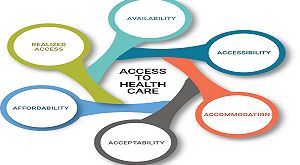Prescription drug coverage is a fundamental component of health insurance that ensures individuals have access to necessary medications to manage their health conditions. This coverage is an essential part of comprehensive healthcare services, as it enables individuals to afford and obtain the prescription drugs prescribed by their healthcare providers.
Key aspects of prescription drug coverage provided by health insurance include:
1. Affordability: Health insurance plans that include prescription drug coverage help individuals afford the cost of medications. This is particularly important for individuals with chronic conditions who require ongoing medication to manage their health. Prescription drug coverage typically involves cost-sharing mechanisms such as copayments, coinsurance, or deductibles, which help individuals manage the financial burden of purchasing medications.
2. Formulary and Coverage Tiers: Health insurance plans often have a formulary, which is a list of covered medications. These medications are typically organized into different tiers, with different cost-sharing requirements for each tier. Commonly, generic drugs are in lower-cost tiers, while brand-name and specialty drugs may have higher cost-sharing. The formulary is designed to ensure that individuals have access to a wide range of effective and affordable medications.
3. Access to a Wide Range of Medications: Prescription drug coverage ensures that individuals have access to a broad range of medications, including both generic and brand-name drugs. This allows individuals and their healthcare providers to choose the most effective and suitable medications for their health needs, ensuring that they receive appropriate treatment for their specific conditions.
4. Mail Order and Specialty Pharmacies: Many health insurance plans offer mail-order pharmacy services, which can provide cost savings and convenience for individuals who require long-term medications. Additionally, some plans have partnerships with specialty pharmacies for medications that require special handling, administration, or monitoring. This can be particularly beneficial for individuals with chronic or complex health conditions.
5. Prior Authorization and Step Therapy: Some health insurance plans may require prior authorization or step therapy for certain medications. Prior authorization involves obtaining approval from the insurance company before a medication is covered, while step therapy requires individuals to try lower-cost or preferred medications before moving to higher-cost options. These utilization management strategies are designed to ensure appropriate and cost-effective use of medications.
6. Medication Adherence Programs: Some health insurance plans offer medication adherence programs to help individuals manage their medications effectively, stay on track with their treatment plans, and improve health outcomes. These programs may include reminders, educational resources, and support services to promote medication adherence and optimal health management.
Prescription drug coverage is crucial for ensuring that individuals can access the medications they need to manage their health conditions, improve their quality of life, and prevent the progression of illnesses. By including prescription drug coverage as part of their health insurance plans, insurers contribute to better health outcomes and overall well-being for their members. Access to affordable and comprehensive prescription drug coverage is a key factor in promoting healthcare access, adherence to treatment plans, and positive health outcomes for individuals and families.







